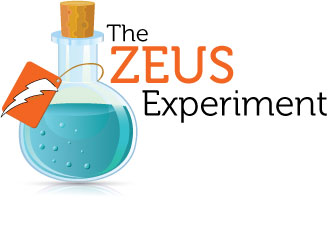This is a guest post by Zeus
Many of you, like me, are putting in a lot of time, energy, and money into developing an online business.
And yet concrete outcomes (substantial business income, successful products, etc.) sometimes seem so far away.
We’re taught to be the “little engines that could,” but how many hills do we have to climb before we can relish a bit of success?
I’m now in the middle of writing my book “Mindflexing,” while simultaneously attempting to increase my e-mail subscribers, blog at least weekly, participate in social media, research new prospective clients, and last-but-not-least, produce real income. Whew! I have a lot on my plate and so do you.
Okay, breathe for a second.
Selling just for the sake of selling isn’t what you want to do. Nobody wants to be the car salesman who convinces customers to buy that green car with expensive add-ons, when they really want the blue, simpler model, right?
On the flip side, providing “value” via your blog posts and other content while getting zero money for your efforts isn’t what you want to do either. Business is supposed to make money. A frustrated member in a private Facebook group for budding web entrepreneurs laid it out perfectly: “Are any of you generating any income with your website?” There wasn’t much positive response.
Back to basics…again
This week I’m revisiting things I’ve already learned. My mentor, Tea, encouraged me to identify, grab, and yank the most important levers in creating a profitable business. It’s easy to miss the obvious things:
- I need to know who I am and what I sell.
- I need to explain what I do and sell myself.
- I need to create actual sales.
Here’s my just-created, two-sentence explanation of who I am and what I expect to get paid for (yes, it still needs work):
“I’m a learning consultant and professional developer who transforms the ability of individuals and companies to learn how they learn. My customized coaching multiplies the value of current organization and training, accelerates performance, sparks useful conceptual thinking, identifies gaps, applies strengths, and improves communication, collaboration, and time effectiveness.”
Here is the first draft of my target audience follow-up:
“I specialize in helping highly intelligent, creative, and non-conventional organizations and individuals create new and powerful ways to bring their unique gifts and products into the world. My coaching resolves two major needs in current professional development: 1) Making teaching or training ‘stick’ with people in a lasting, growing, and meaningful way, and 2) Ensuring that training is successfully transferred across different arenas (departments, tasks, and job descriptions).”
In other words, I help to make external content become an internalized, mobile skill. (<–Note from Tea: this still needs to be simplified.)
Illustrating What I do Via an Example
Almost everyone has been forced to attend one of those eye-rolling lectures on “cultural diversity” or “gender sensitivity.” Yes, these subjects are important. But the way in which they’re delivered is typically mind-numbing and abstract.
The sessions tend to deteriorate quickly into legal check boxes for organizations wanting to avoid liability. Unsurprisingly, they roll off rather than “stick” to participants.
The problem is that diversity and sensitivity sessions are not effectively geared toward constructive engagement.
What if these sessions could involve exploration, role play, discussion, and action-oriented ways to engage differences as an opportunity, rather than a threat? That’s a pretty compelling and real solution: turning a royal pain in the butt into a useful and interesting learning opportunity. (<– Note from Tea: Now THAT’s a better way to explain what you do, Zeus.) (Of course, it would help immensely if I have a package of testimonials and actual results to back up my ability to meet this need.)
Building toward Selling
 In our discussion this week, Tea used the metaphor of dating. She asked, How would you “date” your clients?
In our discussion this week, Tea used the metaphor of dating. She asked, How would you “date” your clients?
Clearly I don’t want to use a sales pitch too soon. That would be like asking a new love interest up to my bedroom on the first date. Not exactly a sign of respect and interest in a long-term relationship.
If you’re like me, you have the opposite problem. You don’t ask too soon. You forget to ask at all. You’re somewhat squeamish about putting together a viable pitch and then executing a well-constructed plan to create sales.
Eventually you’ll want a tangible commitment from someone. So, how do you do that?
Here are some steps I developed in conversation with Tea, for my business:
- Provide concrete examples of what I can do. Using my blog and other content, I need to tell stories that illustrate my usefulness, provide relevant and helpful information about how to solve the problems of my ideal clients, and communicate the concrete advantages of my various approaches. [“Hey, I tried that. It really does work!”]
- Identify and create a list of potential clients and client “types” and then reach out to them. For me this means: learning disabled, cultural creatives, creative companies, etc. I also need to find ways to connect to them (e.g., word-of-mouth, recommendations, influencers, keynote speaking, etc.).
- Research potential client needs and find small ways to deliver some of that in ways that lead to bigger things. An example: Sign a non-disclosure agreement and work as an advisor taking some small piece of an organizational problem, to show what you can do. This is where value comes in, and then a discussion about compensation to extend that value.
- Make a pitch. For me: “This is how my learning transformation can help you with X.
- Ask for the sale. This is like asking for a vote. You’re asking for a ‘yes’ vote of confidence and commitment to do the work.
The important difference between marketing and selling
In our mentoring conversation this week, Tea made a very helpful and deceptively simple distinction between marketing and sales.
It’s true: Marketing and Sales are not the same. Marketing is about building awareness and attracting people to what you’re doing. It’s also the relationship-building part.
Selling, on the other hand, is about closing the deal and generating income.
We’ve got to understand this important distinction if we’re ever going to dispel a couple of rampant myths about what marketing actually does:
Myth #1: “Good marketing automatically generates sales.” For the majority of businesses, this is simply false. First, you have to have something to sell that people want to buy. Many people are still in the stage of trying to get together a product that meets a real need ‘out there.’
Right now, I’m hard at work writing my signature book product, “Mindflexing.” But I also have credible services to market and sell now.
Second, you have to actually let people know what you’re selling. (How hard is it for people to figure this out when they visit your website? Or when they hear you introduce yourself?)
Third, you have to ask for the sale. That is, actually ask someone to buy what you’re offering. (You’d be surprised how often people forget to do this.) In some situations, if you attract enough people and create enough buzz, people may buy your product or service simply out of curiosity or desire. But hopes and wishes aren’t a great business strategy. More often you must actually ask them to buy.
Myth #2: “It’s all about providing value.” No! “Value” provided without eventual income is a hobby, not a business, according to Tea. Value is a crucial step in developing relationships and trust. However, if some relationships don’t move forward to a sale, then you’re essentially doing volunteer work.
What’s my own success in doing this? I’m no guru, for sure. I’ve managed to create several thousand dollars of service income in my business so far (through current relationships and word of mouth). But this is a far cry from the $100,000 annual goal I aspire to reach in the next 10 months. However, I am “building” toward producing income, and my goals reflect that—
- Develop a working website (check),
- Create a compelling entry-level product (book in progress),
- Expand services (currently cultivating promising relationship with a private company),
- Establish lasting connections with audience (regular blogging, subscribers being added to my website)
- Try out a couple of modest pitches with people I know well.
Thinking about outcomes in terms of a bottom line will not make money magically appear, but it will refocus your priorities, your planning, and your actions in directions that have a much better chance of creating income.
Who are you and what are you selling?
What is your two-sentence explanation of who you are and what you expect to get paid for? What concrete things are you doing right now to generate income or build directly toward a paying business? Share with us in a comment below. It’s great practice and hey — your next potential client just might find you there!
***
A Word From Tea
I try not to edit Zeus’ blog posts too much. If I did, you’d lose the flavor that is uniquely him. But I do want to point out that Zeus’ two-sentence statement about what he does needs some polishing. And I know from experience that most everyone else’s do, too.
How could he make his pitch better? One word: Simplify. Keep the words short and sweet.
Any 12 year old should be able to understand it. Yes, even if you’re a smarty pants PhD who’ll probably do work for other smarty pants folks.
When you simplify, you make it easy for anyone — even your mother — to tell other people what you do. So before you post your pitch in a comment below, take a moment or two and see if you can simplify.
Have you used too many multi-syllabic words? Are your sentences longer than a freight train? The trick is to be crystal clear in as few words as possible.
Ready? Go! And if you need some help with this, by all means ask away! The whole point of these posts is to develop conversations that serve everyone. (Of course, if you’d rather do this privately with me, perhaps we should schedule a consultation?)








I don’t know anybody who wakes up in the morning and says, “I need help to internalizing my external content.” I do know people who say, “I keep trying to find ways to talk about what I do but nobody seems to be listening.” My own pitch: I help people find ways to talk about what really matters to them so they can have the conversations they need in their lives. I’m still working on this one and I’d love feedback!
Thanks, Barbara. Part of the trick is reforming less effective habits by creating an open path to feedback. Being public about initial attempts to connect with others and develop a real business does two things, 1) It allows you (and me) to see that developing the “unperfect” is a big part of eventually succeeding. (Too many times you get advice on the perfect end-product, but no help on what it’s like to start somewhere else and get there.) 2) It shows the importance of engaging your learning publicly, “putting it out there,” learning directly and not trying to hide. (Art schools do a great job at this, by putting work on the wall and having the rest of the class comment on it. Makes sense. Should happen in more places.) This is, in essence what I do for paid work: I engage the learning process directly and show you that you aren’t “smart” or “stupid.” You are a learner gaining the skills to “become smarter” in a way that works for your style AND produces real results in the world. (Maybe this should be my two sentence description. See, just engaging your comment, is already helping me to improve.)
Really cool post, Zeus! I enjoyed learning more about what you’re up to and how it’s going. I will come back and read this again tomorrow to give more thought to the helpful points you raise.